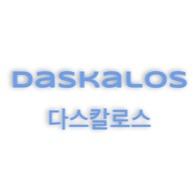Daskalos - 다스칼로스
Daskalos: An interactive playground for transaction validation, offering Web2 developers a no-code, concept-driven learning experience through incremental gameplay.
Created on 3rd September 2023
•
Daskalos - 다스칼로스
Daskalos: An interactive playground for transaction validation, offering Web2 developers a no-code, concept-driven learning experience through incremental gameplay.
The problem Daskalos - 다스칼로스 solves
With the increasing shift towards Web3, a growing number of Web2 developers are transitioning into the Web3 development ecosystem. Yet, many encounter difficulties in fully understanding Web3 concepts, often resulting in less optimal implementations.
There's a clear gap between purely theoretical resources that explain Web3 technology and hands-on coding exercises. Addressing this need, Daskalos - 다스칼로스, inspired by the god of education, offers an interactive, game-based playground. This approach, focusing on a no-code learning experience, begins with basic concepts and gradually introduces more intricate systems. The platform's primary aim is to immerse Web2 developers in an experiential understanding of Web3 operations, moving beyond mere definitions or abstract explanations. By doing so, we hope to streamline their transition into Web3 development. Furthermore, as an open-source and free platform, Daskalos ensures accessibility, promoting inclusivity and reaching a diverse audience, regardless of financial barriers.
Challenges we ran into
Adapting the original incremental game, Paperclips, presented a unique challenge. This game begins with a simple concept that progressively becomes more intricate, demanding a deep comprehension of the subject at hand.
Our initial goal was to illustrate the process of ether staking by validators to qualify for validation. We aimed to showcase how decentralization is fortified with an increasing number of validators, both from a single client software and diverse client software types. However, this approach soon became daunting. Consequently, for the hackathon submission, we chose to provide an approximation of the actual process. To put it plainly, constraints on time meant we had to adjust blockchain activities to match the Paperclips game logic rather than vice versa. Due to these modifications, our playground presumes that players are default validators who commence transaction validation. Elements such as transaction selection, block placement, and size considerations are omitted. Although we desired to incorporate more validators—both of the same and various client software types—the timeframe was restrictive.
We also recognized the significance of a seamless user experience. However, inherent aspects of the Paperclips game logic prevented halting game operations after achieving process automation. This is an area where the user experience could benefit from further refinement, and given more time, we're confident such enhancements are feasible.
Tracks Applied (7)
QF Track
Open Track
Sponsor Prizes
Demo Day
Sponsor Track: Linea
Sponsor Track: Taiko
Sponsor Track: Polygon
Technologies used
